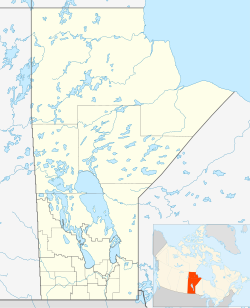Top Qs
Timeline
Chat
Perspective
Buffalo Point First Nation
Indian reserve in Manitoba, Canada From Wikipedia, the free encyclopedia
Remove ads
Buffalo Point First Nation is an Ojibwa or Saulteaux First Nations located in the southeastern corner of Manitoba, along the shores of Lake of the Woods. It is bordered largely by the unorganized portion of Division No. 1, Manitoba, and also has smaller borders with the Rural Municipality of Piney, as well as the northeast corner of Roseau County, Minnesota.
The main reserve of Buffalo Point 36 (49°0′59″N 95°15′42″W)[1] contains the resort community of Buffalo Point, Manitoba (49°0′40″N 95°14′20″W).[2][3]
The First Nation is independent,[2] but was once a member of the Southeast Resource Development Council. Though a signatory to Treaty 3, the First Nation is not a member of the Grand Council of Treaty 3.
Remove ads
Reserves
Summarize
Perspective
The First Nation has six reserve lands:
- Buffalo Point 36 (Ojibwe: Neyaashiing) — serves as their main reserve; with a total size of 1,633 hectares (4,040 acres), it contains the resort community of Buffalo Point, Manitoba.
- Reed River 36A — with a total size of 1,161.6 hectares (2,870 acres)
- Buffalo Point First Nation Indian Reserve 1 — total size of 37.4 hectares (92 acres)
- Buffalo Point First Nation Indian Reserve 2 — total size of 347.9 hectares (860 acres)
- Buffalo Point First Nation Indian Reserve 3 — total size of 91.6 hectares (226 acres)
- Agency 30 — a reserve shared with 12 other First Nations; it has a total size of 379 hectares (940 acres) and is located on the Aulneau Peninsula in the Lake of the Woods in Ontario.
Remove ads
Governance
Buffalo Point First Nation is governed by a traditional system of government where the leadership is determined by a traditional, hereditary system. The number of councillors is determined by the federal Crown–Indigenous Relations and Northern Affairs department. The current leadership is Chief John Thunder and two Councillors.
The First Nation is independent,[2] but was once a member of the Southeast Resource Development Council. Though a signatory to Treaty 3, the First Nation is not a member of the Grand Council of Treaty 3.
Remove ads
Notable citizens
- Eddy Cobiness (1933–1996), visual artist
References
External links
Wikiwand - on
Seamless Wikipedia browsing. On steroids.
Remove ads
